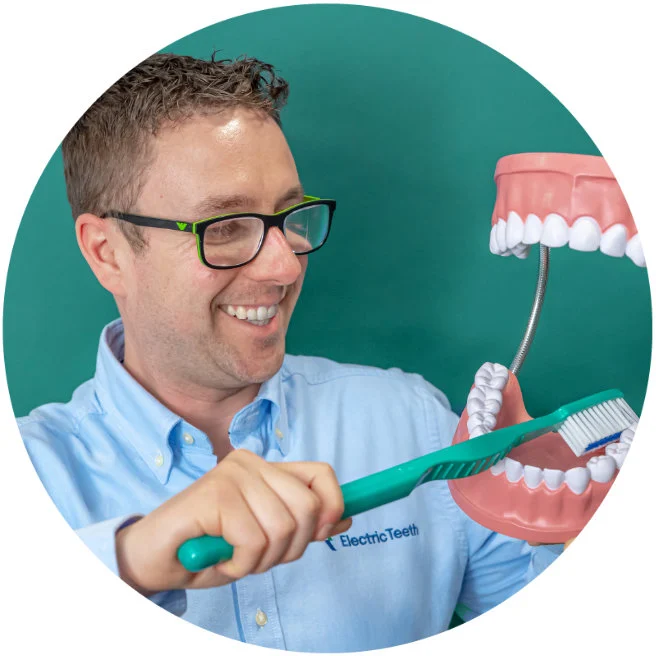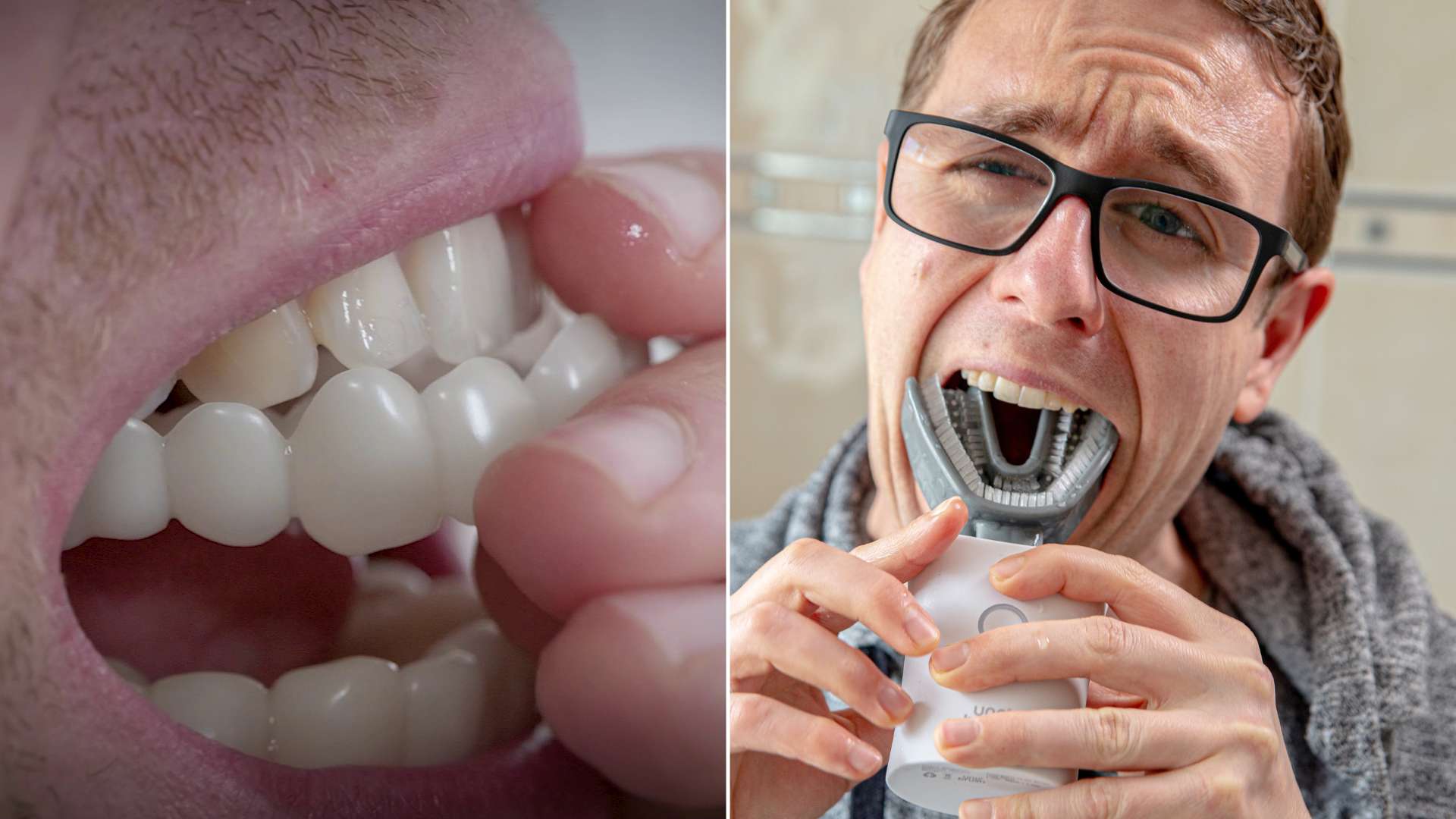
Quick Summary
There are some basic things that are needed for good dental health: a toothbrush, fluoridated toothpaste, and some form of interdental cleaning.
But there are now many products that promise unrealistic results with little effort. Some have been around for a while, others are newer fads that have emerged recently.
In this post, I debunk the claims made about these products and explain why you should avoid them. I also suggest reliable alternatives.
Featured in this article:
Snap on veneers — plastic clip-on teeth used to change the appearance of your smile without seeing a dentist
Mouthpiece toothbrushes — which aim to reduce the time you spend cleaning
Ultrasonic tooth cleaners — to remove tartar at home
Whitening kits — to change the colour of your teeth at home
Online tooth straightening or aligners sent directly to your home
Rubber band tooth straightening to close gaps between teeth
Mouthguards to improve bite and improve your jaw and facial structure - (DIY myofunctional orthodontics)
DIY mouthguards for grinding, made using a boil and bite gumshield
Snap on veneers
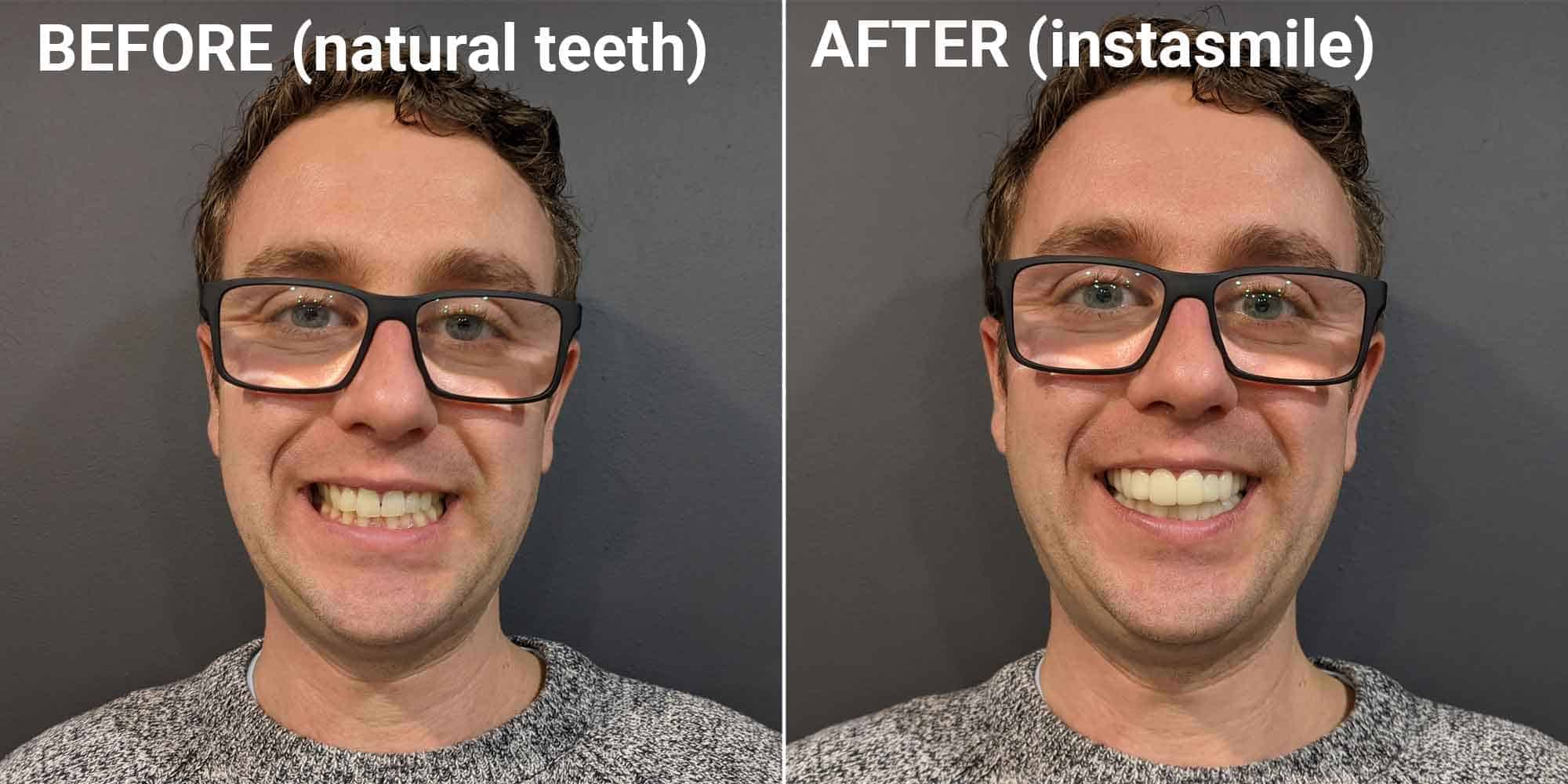
Product overview
These are removable plastic veneers that clip on over your teeth. They are made using a model of your teeth and are designed to fit only you. Other common names for them include removable veneers, instant smile, clip-on veneers, snap-on smile or instant veneers.
Claim
These claim to be a quick way to change the appearance of your smile. They cover up teeth you don’t like and fill gaps where teeth are missing. This is promised without setting foot in a dental practice, and at a fraction of the cost. They are advertised as a cheap and quick alternative to cosmetic dental work.
Why it can be bad for your teeth / problems with it
The use of snap-on veneers can cause irritation to the gums. There is also the possibility that they can cause tooth decay by trapping food and plaque.
There's a good chance the product won't look as good as you're expecting. They are made of one piece of plastic which has a dull opaque colour that does not look like natural teeth.
They can be bulky too, causing a lisp or even difficulty moving your lips naturally to smile and eat.
Some brands are still expensive for a product that is unlikely to last beyond 18 months. When we compared the prices of a leading brand with professional alternatives, the price differences over a 5-10 year period were not as good as you may think. While professional options cost more to begin with, they last longer and therefore cost less over the long term.
More than anything, ordering these does not give you a chance to ask questions about all the options available for you as an individual. You don’t get to ask if these will solve the concerns you have. And, because the people who make them are not regulated in any way, you are not protected if anything does go wrong.
Our recommendation
At Electric Teeth, we do not recommend that you purchase snap-on veneers from the internet. We advise against all direct-to-customer removable veneers because of the potential for harm to your teeth and gums.
We recommend you visit a dentist to have a discussion about your specific concerns and come up with a personalised treatment plan depending on your needs.
Legitimate alternatives
To change the appearance of your teeth, you could consider tooth whitening, composite bonding, or dental veneers. To fill gaps due to missing teeth, your options include removable dentures, bridges, or dental implants.
Full review
We also have a video that explains snap on veneers in more detail and Jon also tried Instasmile and created a video review.
Mouthpiece toothbrushes
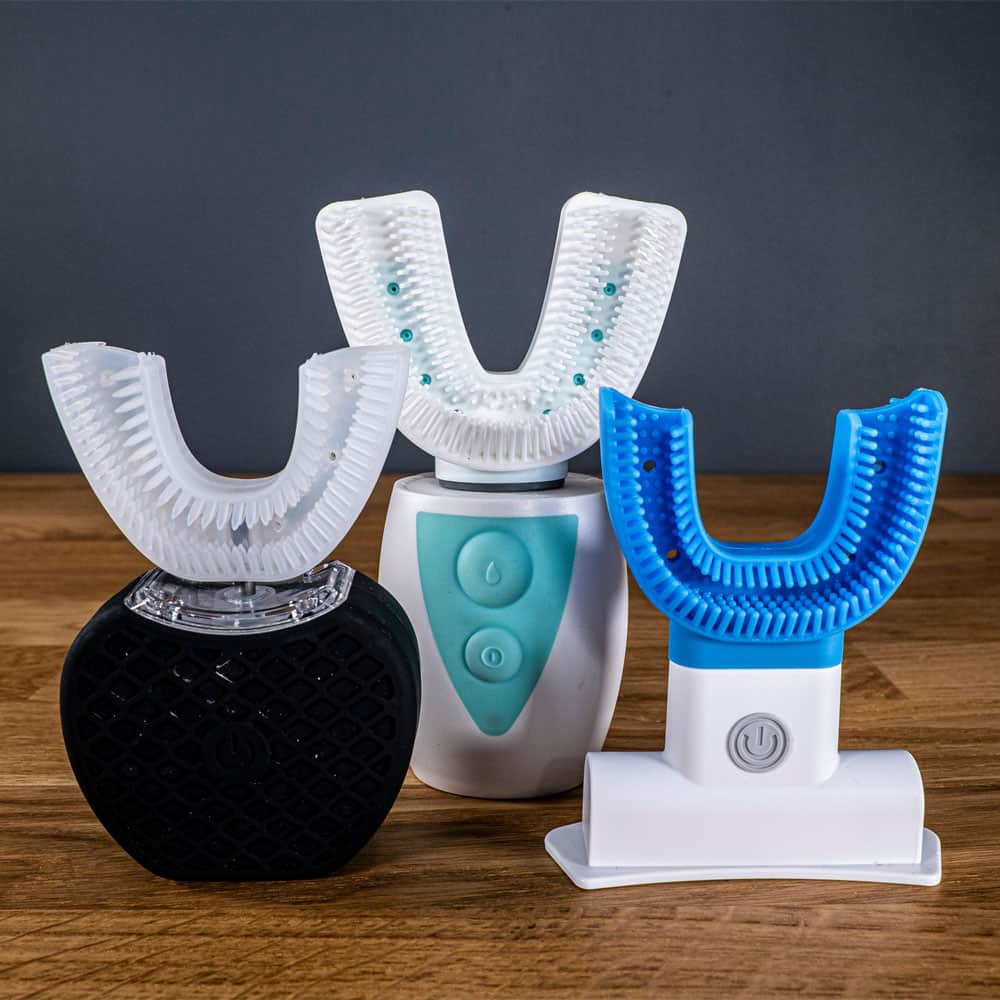
Product overview
Mouthpiece toothbrushes are a relatively new style of dental health product that cleans all the teeth at the same time.
You place the molded mouthpiece/brush head (often made from silicone) in the mouth and bite into it.
The mouthpiece is attached to a handle or handpiece that sits outside the mouth. The handpiece includes the motor that moves the bristles in the mouthpiece to clean the teeth.
Whilst ‘mouthpiece toothbrush’ is one name for this type of electric toothbrush, they are also referred to under many other names, including mouthguard toothbrush, automatic toothbrush, U-shaped toothbrush, or hands-free toothbrush.
The majority are U-shaped and cover all teeth in the mouth. But other styles exist, some cover just 1 arch of teeth and there are J-shaped or half-mouth options too.
Claim
All teeth are cleaned at the same time, without moving a toothbrush around the mouth.
A built-in power source (the battery) will power a motor when the brush is switched on. The motor drives a series of brush heads/bristles inside the mouthpiece.
The bristles sweep along the tooth and gum surfaces to clean the teeth.
Because all 3 surfaces of your teeth are cleaned at the same time, it reduces the amount of time you need to spend brushing.
Some brush makers also promote better cleaning as there are fewer brushing errors, as the “human element” of brushing is removed.
Why it can be bad for your teeth/problems with it
At Electric Teeth, we have reviewed and tested many mouthpiece toothbrushes.
The problem is that they simply are not effective at cleaning. They are not yet good enough to replace conventional cleaning with a manual or electric toothbrush and interdental cleaning.
Cleaning with a mouthpiece toothbrush leaves plaque on the teeth and gums. This plaque is what is responsible for tooth decay and gum disease.
Our findings are supported by at least 2 clinical studies, both of which do not advise using such products. The main findings are that the mouthpiece brushes:
- Are not effective in removing dental plaque.
- Are not significantly different from no brushing.
- Cannot be recommended for regular oral hygiene at home.
- Have a poor alignment and density of bristles.
- Do not come in enough different sizes to cover different jaw shapes.
The manufacturers of mouthpiece toothbrushes lack the evidence to support the pre-sale claims they make.
We have seen an alarming increase in the number capitalizing on the unique design and lack of testing, to sell poor-quality products to unsuspecting members of the public.
As well as poor cleaning performance, other problems with mouthpiece toothbrushes include:
- Misleading social media adverts referring to recommendations from dentists who don’t seem to exist.
- The same poor-quality product being advertised by different brands (for example, there are over 30 different sellers of the V-White toothbrush)
- The high cost of these brushes. Prices start from as little as CAD$75 with the average starter kit being CAD$150.
- The impact on the environment of buying an unnecessary electronic device, which then needs special disposal as e-waste.
Our recommendation
We strongly advise that you DO NOT buy a mouthpiece/automatic toothbrush.
SymplBrush is the best-performing product to date. The cleaning results are impressive if used correctly. You need to master the technique to achieve good results. Even then it still falls short of the standard required to replace a regular toothbrush.
Unless you have seen reliable evidence that they work as claimed, you should stick to a regular manual or electric toothbrush.
We do believe that this type of toothbrush could well be the future, but now and for the foreseeable future, they are not good enough.
Legitimate alternatives
If you simply want a brush that cleans the teeth well, see our posts on the best electric toothbrush. It will save you some money.
We also have guides on how to brush your teeth properly with a manual toothbrush or electric toothbrush.
Full review
We have tested and reviewed many mouthpiece toothbrushes, including the Myst brush, Hibrush, and Y-brush. You can find reviews for these on our YouTube channel.
Ultrasonic tooth cleaners
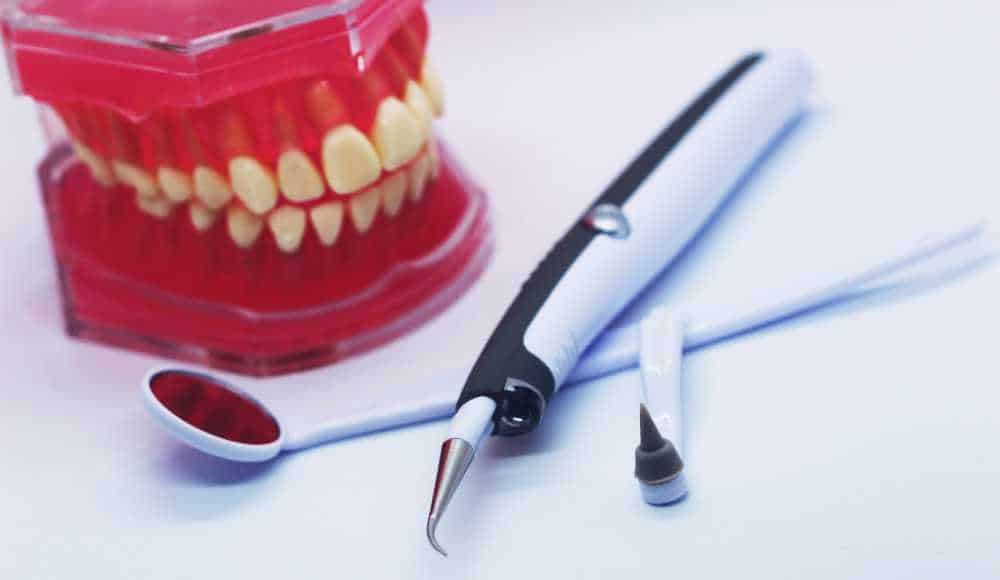
Product overview
Battery-operated hand-held cleaners that vibrate to remove plaque and tartar from the teeth. Other names for them include home scalers, dental scalers, and tartar removal instruments.
Claim
Several manufacturers exist, and these can even be bought in some shops on the high street. They claim to remove tartar and staining from the teeth, similar to professional dental scaling, but without leaving the comfort of your own home. Some say that using their scalers will make teeth appear whiter and improve your oral health.
Why it can be bad for your teeth / problems with it
These do not whiten your teeth. It is not possible to lighten the overall colour of your teeth without professional whitening.
The biggest problem is that they are ineffective. You cannot completely remove tartar, or calculus, from your teeth at home because the bond to the tooth is too strong.
Some may remove staining, but not always. And not without risk. Risks include:
- Trauma to the gums from the sharp metal tip.
- Gum irritation from high temperatures of the fast vibration rate, especially because there is no water flow.
- Scratching the enamel surface if used incorrectly.
- Damage to existing dental work such as white composite and metal filling, crowns and veneers too. Scratching these surfaces will make them more prone to staining and plaque buildup.
- Causing infections in the gum by using non-sterile scalers as we do not know where these devices are made and are unable to clean them effectively at home.
Our recommendation
These products don’t work to remove calculus but still have the potential to cause damage to your teeth and gums.
I would recommend you avoid wasting your money and not buy them.
Legitimate Alternatives
Keep your teeth and gums clean with the correct techniques for brushing at home. Regular interdental cleaning is also important.
Consider a whitening toothpaste for stain removal (which may work for light staining, but be aware these will not change the colour of your actual teeth). Only those containing peroxides at a high enough dose will have a true whitening effect, which is theoretically possible in toothpastes bought over the counter in Canada.
If you have a lot of calculus build-up, see a dental professional for a scale (and polish), whilst air polishing is good for the removal of tough stains.
If you want to lighten the overall colour of your teeth you can consider tooth whitening treatment.
Whitening kits
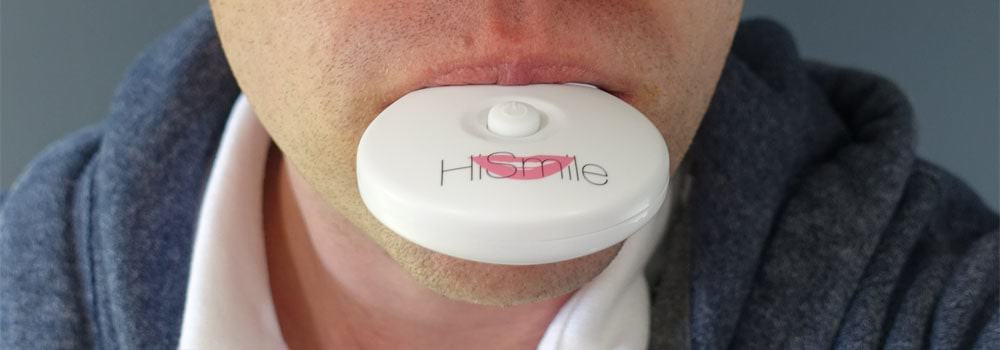
Product overview
Products available over-the-counter or online that “whiten” teeth. This includes whitening gels, whitening pens, and whitening strips.
Claim
Sellers claim the products will make your teeth lighter in colour. They claim to get a similar overall bleaching effect on the tooth without custom-made trays and without seeing a dentist. They advertise themselves as being cheaper than professional tooth whitening, and more convenient as they can be delivered straight to your door without a dental appointment.
Why it can be bad for your teeth / problems with it
The regulations around at-home tooth whitening products are complicated. This is because products containing bleaching agents but no fluoride are legal “cosmetics” rather than medicines.
Regulation is important because if the correct precautions are not taken, or if unsuitable products are used, whitening can be painful, dangerous, and harmful to your long-term health.
For an explanation of the different options for tooth whitening, visit the It's Your Health website from the Canadian Government.
Over-the-counter tooth whitening kits have a couple of risks. Some sites may be importing legitimate products and selling them illegally, others may be selling products that are counterfeits.
Stronger products are available from your dentist. Non-dentists may try to sell you such kits, which do have an effective concentration of peroxide. There are some things to be aware of if using these kits without first seeing a dentist.
- If this is a genuine product and you use it without first having a dental checkup, it can cause problems in teeth that have untreated disease such as dental decay. Ultimately you risk toothache and teeth even dying off.
- If this is not a genuine professional product, there is no guarantee of the safety of the ingredients being used. Counterfeit products may be even stronger than the concentrations needed to work. These could damage the tooth surface and cause chemical burns on the gums.
- The bleaching product is not used in custom-made trays. This increases the risk of it being spread onto the gums and damaging the gum tissue.
Chemical burns, blisters and ulcers are all problems that can happen when whitening treatment goes wrong. Swollen lips are also another potential side effect of dangerous tooth whitening.
Our recommendation
Our recommended method for teeth whitening is to book an appointment with your dentist, who can make custom moulded trays.
Our dentists prefer carbamide peroxide to hydrogen peroxide, as it gives the patient more control over the procedure, causes less sensitivity, is less irritating to the gums, and is less problematic overall.
Tooth whitening is a cosmetic procedure so this must be taken into consideration for costs with your dentist.
Legitimate alternatives
For stain removal, whitening toothpaste may be sufficient. However, treatments such as a scale and polish, or air polishing, are also very effective at removing tough stains.
If you are interested in lightening the overall colour of your teeth, consider professional tooth whitening.
Online teeth straightening
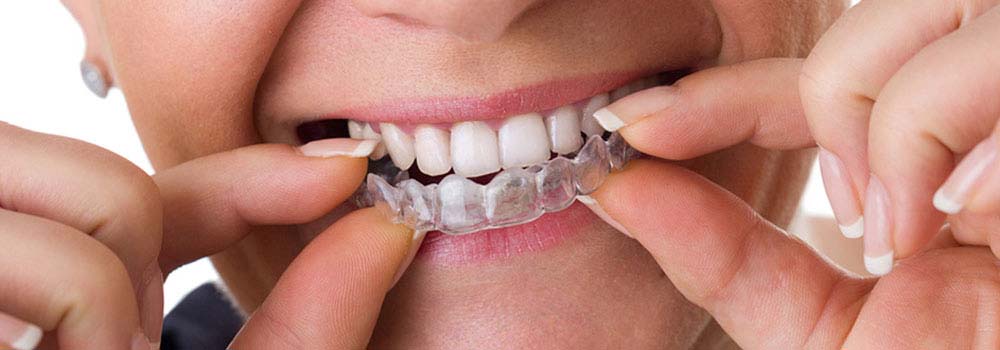
Product overview
These are clear aligners sold directly to patients, without seeing a dentist or orthodontist. You take impressions at home or attend an appointment for a scan of your teeth and are then sent a number of clear plastic “braces” which will change the arrangement of your teeth. Another name for these types of tooth straightening is “direct to consumer orthodontics”. Examples include Smile Direct Club and Straight Teeth Direct. Some also offer complimentary tooth whitening.
This is not the same as dentist-provided clear aligners, such as Invisalign, where you have an assessment and regular appointments to monitor treatment.
Claim
The companies selling online teeth straightening promise to permanently change the appearance of your teeth by moving their position. Because they are made of clear plastic, they are not immediately obvious when you are wearing them, so are an alternative to conventional fixed braces (or train tracks as you might know them). They claim to be cheaper than visiting a dentist for removable braces treatment and are more convenient as you don’t need to visit a practice for appointments.
Why it can be bad for your teeth / problems with it
Before starting orthodontic treatment, you should have healthy gums and teeth. You should not have any sort of treatment with braces if you have active tooth decay or gum disease.
These companies do not check your teeth before starting and so you might have untreated dental problems.
Home impression kits and scanning machines in shops will record the position of your teeth, but they do not assess the health of the teeth and gums.
X-rays should be taken before any treatment to move teeth. These can only be done at a dental practice or hospital.
Whilst all orthodontic treatment comes with an element of risk, Dental Protection advises that “the risk of a problem developing, or not being identified at the outset, is likely to be significantly increased if a patient has not had a full clinical examination prior to commencing treatment.”
The Canadian Dental Association has released their own warnings and advice too, advising “ If using a direct-to-consumer dental appliance leads to unexpected complications or results that fall short of your expectations, your dentist or dental specialist may have limited choices to help, correct, or address your situation.”
This is because unsupervised treatment is not risk-free and can lead to irreversible damage to your teeth and gums.
In the case of tooth decay, if it is not treated before you have aligners, the aligners will not fit after it has been treated. The worst-case scenario is that decay progresses to a stage where the tooth has to be removed.
For gum disease, this can actually be worsened by orthodontic treatment. DIY braces can also result in permanent gum recession.
Another risk of orthodontic treatment is that it can lead to a change in your bite. Where this is not closely monitored by a dental professional, long-term damage can be done including jaw pain and tooth wear (TMJD).
All orthodontic treatment also comes with a risk of root resorption, which cannot be monitored or assessed without dental x-rays.
If this is not spotted by a dental professional, root resorption can lead to teeth dying and tooth loss.
Unlike genuine dental and orthodontic practices, these companies are not healthcare driven.
Dental professionals have trained for many years and have a passion to help people.
Dental professionals are also governed by strict codes of ethics and have regulatory bodies that hold them to account.
If your treatment is substandard with a dentist or orthodontist, there is a complaints procedure and they also have insurance in the worst-case scenario.
Unregulated companies providing online teeth straightening have little regulation and you don’t have many places to turn to for help if you aren’t happy.
Orthodontics Australia has released a good video that summarises the risks of direct-to-consumer orthodontics:
Our recommendation
Proceed with caution when choosing direct-to-consumer orthodontics. As a dentist, I can only recommend treatment that has the full involvement of a registered dental professional, but also understand that online teeth straightening is one option available to you.
Before starting any treatment, I would advise you to book in to see a dentist to discuss the concerns you have with the appearance of your teeth. They can also check that the teeth and gums are healthy before you start any braces treatment.
Get clued up on all the different orthodontics options by visiting the Orthodontic Treatment Page from The Canadian Association of Orthodontists.
If you have seen a dentist and still wish to have braces from an online retailer, my advice would be
- Have a 3D scan in person rather than take your own impressions. This will ensure a better quality fit, and also gives you a face-to-face opportunity to ask any questions, as well as for someone to look in your mouth. Note that anyone doing a 3D scan should at a minimum be on the relevant dental register (but preferably a dentist or orthodontist).
- Have at least one face-to-face appointment with your treating dentist, where they can fully assess your teeth, gums, and bite.
- Specific questions to ask at the appointment include: “Do I need x-rays?” “What are my other treatment options?” “What are the possible risks of treatment?” “What do I do if I have problems with my treatment?”. If you don’t get a satisfactory answer, do not have treatment with this person. The American Association of Orthodontists has a good list of questions too.
- Ensure you get the name of a qualified dentist or orthodontist and their registration number as a person who is responsible for your treatment.
- Have a conversation with the registered dental professional responsible for your care before proceeding with any treatment.
These have been developed using guidance from the General Dental Council (UK based), The American Association of Orthodontists and Orthodontics Australia.
Legitimate alternatives
If your preference is having braces that can’t be seen, you could consider treatment with the most widely known provider, Invisalign. I have personally had Invisalign treatment and recommend it. There are also other types of braces such as lingual braces and ceramic braces, which can be provided by orthodontists.
If cost is a concern for orthodontic treatment, I recommend that you shop around and get quotes from multiple orthodontists as prices can vary greatly between practices. Some practices will also offer finance options.
Rubber band straightening / gap bands
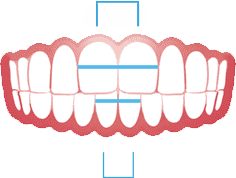
Product overview
A form of DIY orthodontics, where elastic bands are used to bring teeth closer together. This is a do-it-yourself type of treatment, where you don’t see a dental professional.
People use conventional orthodontic elastics, hair elastics, or unregulated “orthodontic gap bands” around two or more teeth to move them.
Claim
Placing the rubber band around two (or more) teeth will close the gap between them. Users claim the pressure from the elastic will push the teeth together so there is less of a gap.
They are advertised as a way to straighten your teeth without seeing a dental professional, and for a very low cost. There is no need to see a dentist or orthodontist, no removable aligners, and no fixed braces.
No qualified dental professional has given advice on how to do this, with instructional videos coming from influencers and vloggers via social media.
Why it can be bad for your teeth/problems with it
All orthodontics carry an element of risk. This includes damage to the roots of the teeth, damage to the gums, and a change in your bite.
Tooth movement which is not closely controlled, and not being monitored by a qualified professional, can result in loose teeth. These mobile teeth can be irreversibly damaged and can actually die off in some circumstances due to the trauma of tooth movement. This dental case report describes how a young boy ended up losing his two front teeth after trying to close a gap with elastic bands.
When teeth are moved too quickly it can cause resorption of the root - meaning they dissolve and can lead to mobile teeth. It can also damage the nerve of the tooth, causing the tooth to die, and then requiring root canal treatment. Often these teeth do not have a good long-term survival rate though, and some will need to be removed.
Using elastic bands also increases the risk of traumatising the gum due to the tight bands. There is also no guarantee of how clean the bands are, and you risk introducing bacteria or viruses and causing an infection in your mouth.
Also, consider that you are only going to move the teeth that have the elastic band around them. There is the potential to create gaps on the other side of these teeth instead.
Long term, teeth are likely to drift back to their original position unless you have some sort of retainer. It is not possible to get a retainer without seeing a dentist.
There are videos here and here than warn against DIY orthodontics.
Our recommendation
Do not use rubber bands around your teeth to close gaps.
Book in with a dental professional to discuss your concerns and explain what options might be available to help change the appearance of your teeth.
Legitimate Alternatives
You can disguise the gap by using white filling material on the teeth on either side in a process called composite bonding. Likewise, the gap could be covered by dental veneers.
You can move the teeth to close the gap using traditional braces or clear aligners like Invisalign (with a dentist or orthodontist).
Mouthguards to “Improve your jaw and facial structure” (DIY myofunctional orthodontics)
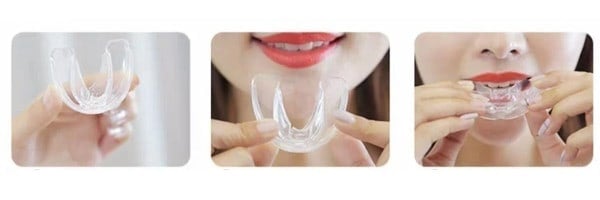
Product overview
These are soft plastic mouthguards that are not specific to your teeth or mouth. The plastic covers both the top and bottom teeth at the same time and prevents them from fully meeting. They are designed to be used while you sleep. They are placed in the mouth before going to bed and are not worn during the day.
Examples of these types of braces include Umonuv and Sleepobrace.
Claim
These types of braces claim to change the alignment of your teeth and the shape of your face. They do this by changing the way the muscles in your face move and changing the places where they put pressure on the teeth.
They advise that these devices help correctly position the tongue, which they correlate with improved breathing and jaw structure.
Promises made by the manufacturers include:
- Realigning teeth
- “Improving” teeth crowding, crooked teeth, overbites, expanding a narrow arch and reducing tooth gaps
- “Improving” the structure of your face and jaw
- Eliminating double chins
- Better breathing - improving nasal breathing by “correcting” tongue posture
- Improvements in snoring
Why it can be bad for your teeth / problems with it
As with all DIY orthodontic options, these companies send the braces directly to you and so you have no discussion with a dental professional to diagnose accurately and no discussion about alternative treatment options.
This seems to be following the theory of myofunctional orthodontics. There is minimal research on this topic, and its success is debated amongst orthodontists. Most of the evidence is released via Myo Research, the same people who produce myobrace.
Orthodontist Kevin O’Brien discusses various research on his website (here, here, and here).
The small amount of evidence in favour of these types of myofunctional appliances suggests they should be used during periods of growth, e.g. in childhood and adolescence, and not as an adult. But the devices are not recommended for children on the websites.
For most people internet-bought aligners like these will have no long-term positive effect.
Poorly fitted plastic mouthguards like these can also cause trauma to gums and cheeks, as well as being a choking hazard.
These companies are perpetuating impossible beauty standards. They are associating “a firm and perfectly shaped face” with a certain appearance. The companies are setting unrealistic expectations and vilifying commonly found facial features. “Double chins” are common and are not a sign of you being unhealthy. Claims of such braces creating a “better facial shape” with “defined cheekbones, jawline” are unfounded. But these features are not indicative of beauty either. There is talk of “improving” facial structure, but who is the right person to judge if your face shape needs changing?
Our recommendation
Avoid internet-bought mouthguards that promise changes to tooth alignment and face shape. Anything that holds medical claims should be registered as a medical device and requires a prescription from a healthcare professional - doctor or dentist.
Visit a dentist to discuss any concerns you have with your smile, and they can fully explain all options available.
Legitimate Alternatives
Myobrace is a prescription device provided by qualified dentists and orthodontists. It is aimed at children.
Traditional orthodontics or braces or treatment with removable aligners like Invisalign are alternatives for changing the alignment of teeth in adults.
Some teeth can be covered with composite bonding or veneers to disguise malalignments.
If you are wanting minor changes to the shape of your face, some changes can be made using muscle relaxants such as botulinum toxin (trade name Botox) or injectable dermal fillers. Ensure you see a registered healthcare professional for these sorts of treatments.
You can book a consultation with a cosmetic surgeon to discuss other options for changing your face shape with plastic surgery.
DIY mouthguards for grinding
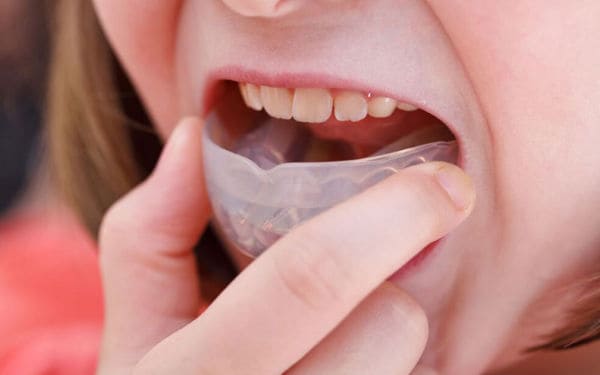
Product overview
A removable soft mouthguard, which you put in your mouth before falling asleep. It is made without doing an impression but may be adapted using a “boil and bite” technique. It is not made specifically for your mouth.
Boil and bite examples include SleepPro Self Fit, DenTek
There are also examples of companies that send you impression materials for you to make an impression at home. They then make a mouthguard that is specific to you but without the involvement of a dentist. Examples, where they take an impression, include SleepPro.
Claim
It can help prevent tooth wear caused by grinding in your sleep and can also prevent or cure jaw pain associated with grinding too.
Why it can be bad for your teeth / problems with it
Tooth grinding associated with jaw pain and other problems is known as bruxism, and you can find out more about that here.
Whilst it is true that wearing a professionally made night guard can protect your teeth against tooth wear caused by grinding, there is mixed evidence about how well they reduce jaw pain.
There is no evidence to support the effectiveness of generic mouthguards for managing jaw pain.
Wearing a mouthguard overnight does not come without risk and shouldn’t be considered without seeing a dentist to exclude any other conditions (such as a jaw fracture causing pain or a change in bite caused by dental problems).
A significant problem with a poorly fitting night guard is that it is a choking hazard. It could easily become dislodged overnight and have potentially life-threatening consequences.
Unsuitable mouthguards could potentially make jaw pain worse, especially if it is poor fitting.
Even those that need impressions aren’t problem-free. Any product which carries a specific health claim should be considered a medical device and should be treated as such. If the device isn’t registered, there is no oversight of the quality of the materials used or the safety of the product.
For example, SleepPro says it provides “Mandibular advancement devices” and specifically states “SleepPro products are recommended and approved by sleep clinics, hospitals, doctors and dentists worldwide. In Britain, they are tested and recommended by many of the NHS and private hospitals with treatment programmes in sleep medicine and snoring – including Harley Street and two of the UK’s most important centres of excellence in sleep medicine.”
They provide no evidence to support their claims, and although I contacted them for further clarification on the medical claims, they have not yet responded.
Our recommendation
Do not buy DIY mouthguards for grinding.
If you have jaw pain, book in with a dentist to make sure grinding is the cause and that there are no other dental problems. They can advise you whether a night guard will be beneficial to you and can provide you with a mouthguard that fits you and meets your needs. They can also discuss all the alternative treatments available.
Legitimate Alternatives
A laboratory-made mouthguard can protect your teeth against tooth wear caused by grinding. Different materials can be tried to see which improves your jaw pain. Jaw exercises may be recommended by your dentist. Other treatments include acupuncture or referral to a specialist for further assessment and treatment including surgery.
Where to get good information
If you are thinking about buying a product, but aren’t sure whether it is safe or legitimate, there are some places you can look for good information.
Here at Electric Teeth we test newly released products so that we can tell you if they are worth buying.
We will keep this post updated with new information, and you can search the site for other product reviews.
But it's not just us warning against money-wasting products.
Other useful contacts include:
- The Canadian Dental Association website.
- For information about your consumer rights, you can also contactCompetition Bureau Canada.
For the best advice, get in contact with a dental professional. They can give you information and advice tailored to you.
Anyone claiming to be a dental professional will be registered with their local dental regulatory authority. This is different for dentists, dental hygienists and therapists, and dental assistants. Ask for their registration details, or find your local regulatory authority in these places:
- Dentist hygienists: list of dental hygienist regulatory authorities (by state)
- Dental assistants: list of dental assistant regulatory authorities (by state)
Anyone not registered is not qualified to give you dental advice, and is breaking the law if they are providing treatment for you. This includes selling products over the internet.
What to do if you are concerned about a product
If you think a product is unsafe, it is difficult to know what to do. It depends on where it is being sold, who is selling it, and the health benefits promised.
Anything that states explicitly that it has health benefits could be considered a medical device and should pass stringent testing. If it is not tested and registered, you can report the company via the MHRA.
Some companies get around this by saying it is a “cosmetic product” so that the regulations do not apply. However, they do have their own rules for making cosmetic products available in Canada.
There are also laws against deceptive marketing practices. If the product has false or deceptive advertising, and you are concerned about this, you can contact Competition Bureau Canada. Ad Standards also provides a reporting option.
If you think a business has broken the law or acted unfairly, another option is to discuss this with your local Office of Consumer Affairs. Trading Standards can then investigate the claims and provide further advice for your next steps.
Tell us about a product you’re not sure about
If you’ve found a product you’re interested in but you’re not sure if it’s safe, leave a comment below and we’ll try to investigate it and update this post.
Summary
There are many products available that promise a change to your smile without seeing a dentist. Some say they will help improve your cleaning at home, without evidence to support this.
You can avoid disappointment by not buying these dental products.
At best, the products we have discussed will have no benefit and will be a waste of money. Useless health and beauty products also have a negative impact on the environment by using plastics and creating non-recyclable waste.
In some cases, these products can directly harm your dental health. They can damage your teeth and gums and can cause jaw pain and even tooth loss.
If you are in any way unsure about a product, contact a dental professional. They can discuss your concerns and give you tailored advice about all the options available to you if you want to change your teeth.




